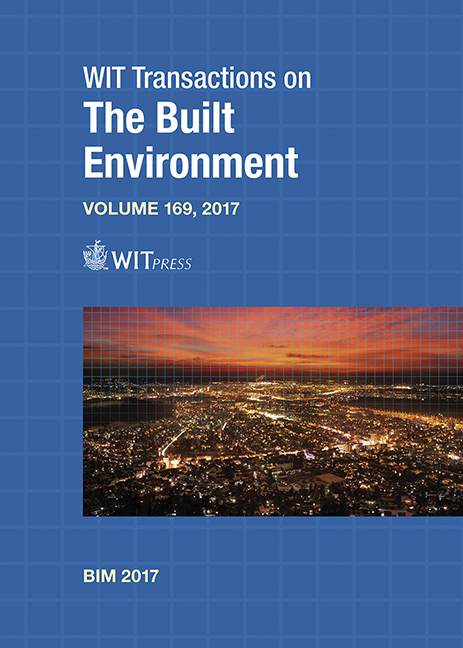THE FAÇADE OF THE CHURCH OF NUESTRA SEÑORA DE LA ASUNCIÓN IN BIAR (SPAIN): FROM POINT CLOUD TO HBIM
Price
Free (open access)
Transaction
Volume
169
Pages
9
Page Range
69 - 77
Published
2017
Size
1,849 kb
Paper DOI
10.2495/BIM170071
Copyright
WIT Press
Author(s)
JOSÉ ANTONIO HUESCA TORTOSA, DAVID TORREGROSA FUENTES, MIGUEL LOUIS CERECEDA, YOLANDA SPAIRANI BERRIO
Abstract
Nowadays, the use of Building Information Modelling (BIM) for cultural heritage preservation is a challenging topic and its complexity increases considerably as far as the need of introducing sculptural elements integrated in façades of church doors and historical heritage buildings arises. For this aim, it is essential to control all the workflow covering data acquisition by topographic techniques, terrestrial laser scanning (TLS) or photogrammetry and the so-called Heritage Building Information Modelling (HBIM). For this purpose, the parametric modelling by BIM requires the improvement of the mesh integration of sculptural elements previously generated from point clouds by TLS. Thus, the success of the final outcome will depend in large measure on the work-flow generated with different software used for the mesh modelling and refining and its integration in the BIM model. Once sculptural elements have been integrated in the BIM model, their information implementation and the introduction of behavior and features associated become critical for the correct interpretation. In this paper, we present a survey and an analysis on the degradation of the stony elements as well as the characterization of different materials used in the construction and in the subsequent interventions and that can be observed to date of today. Focused on the façade of the Church of Nuestra Señora de la Asunción of Biar (Alicante, Spain), where a set of sculpture reliefs revolving around the main scene located at the tympanum stands out extraordinarily, and whose sculptural ensemble is severely affected by the impact of a high degree of erosion and pollution processes.
Keywords
point clouds, BIM, Building Information Modelling, cultural heritage, survey, conservation, maintenance, Biar





